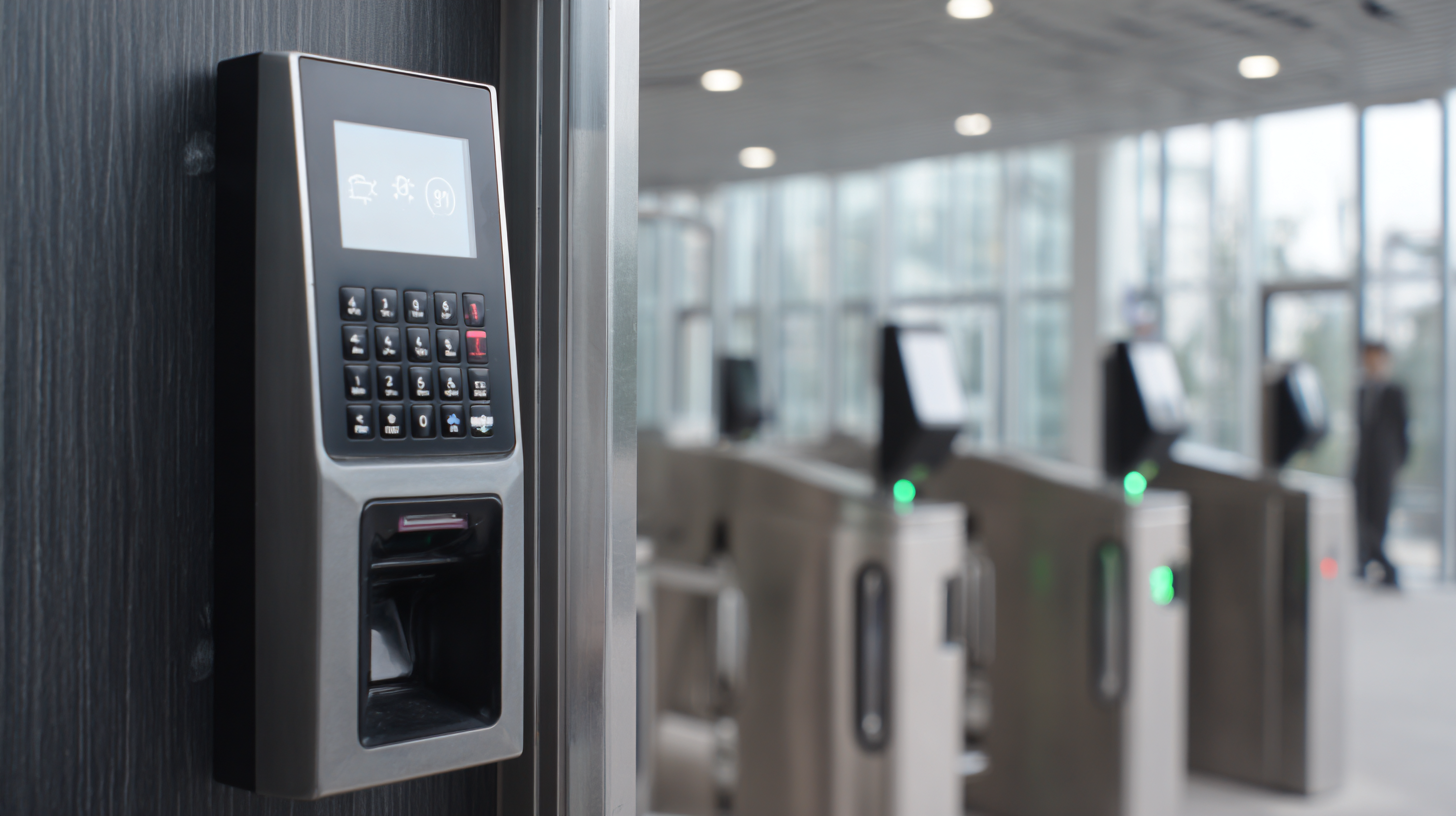Unlocking Opportunities: Access Control Software Trends at China Import and Export Fair 2025
As the 138th China Import and Export Fair (Canton Fair) approaches in 2025, the spotlight is increasingly set on
Access Control Software, a pivotal element in modern security infrastructure. According to a recent market analysis by
Allied Market Research, the global access control market is projected to reach USD 10.76 billion by 2025,
growing at a CAGR of 7.8%. This growth is driven by rising security concerns and the adoption of smart technologies across various sectors.
The Canton Fair serves as a significant platform for showcasing cutting-edge technologies, including advancements in Access Control Software
that streamline security processes and enhance operational efficiency. Additionally, a report from Markets and Markets indicates that the
integration of IoT and AI in access control solutions is redefining user experiences and operational capabilities, making the 2025 fair a pivotal moment for industry leaders
to explore new opportunities and innovations in access management solutions.

Emerging Trends in Access Control Software for 2025 Trade Fairs
As the China Import and Export Fair (Canton Fair) gears up for 2025, access control software is poised to evolve significantly, responding to the growing need for enhanced security and streamlined visitor management. Emerging trends indicate a shift towards advanced biometric systems, with a report from MarketsandMarkets projecting the global biometric market to reach $66.6 billion by 2027, a CAGR of 14.4%. This trend underscores the increasing adoption of fingerprint and facial recognition technologies in trade fairs, ensuring that only authorized personnel gain entry, thus enhancing the overall security framework.
Another critical trend is the integration of
IoT (Internet of Things) with access control systems. According to industry analysts at Gartner, the number of connected IoT devices is expected to exceed
25 billion by 2025. This technological convergence facilitates
real-time tracking and monitoring of attendees, allowing event organizers to gather valuable data on visitor behaviors and preferences. Consequently, these insights enable a more personalized experience for attendees, ultimately driving engagement and fostering stronger business relationships during trade fairs.
Moreover,
cloud-based access control solutions are gaining traction, providing a scalable and cost-effective alternative to traditional systems. Research by Grand View Research estimates that the cloud-based access control market will reach
$14.9 billion by 2028, expanding at a CAGR of
18.6%. This transition not only simplifies system management but also enhances flexibility for event coordinators, enabling them to adapt to changing security demands efficiently. With these innovations, access control software will play a pivotal role in shaping the future of trade fairs in 2025 and beyond.
Impact of IoT on Access Control Solutions at the China Import and Export Fair
The Internet of Things (IoT) is poised to revolutionize access control solutions showcased at the China Import and Export Fair 2025. As smart devices proliferate, the integration of IoT within access control systems is becoming increasingly prevalent. This technology not only enhances security measures but also offers unprecedented flexibility and convenience for users. By enabling remote monitoring and real-time responses to access events, IoT-driven solutions allow businesses to streamline their operations while ensuring robust protection against unauthorized access.
At the Fair, attendees will witness innovative applications of IoT in access control, such as biometric authentication systems that utilize cloud connectivity for data processing and storage. These advancements allow organizations to gain insights from access patterns, making it easier to spot anomalies or potential security breaches. Additionally, the seamless integration of IoT with existing infrastructure promises to reduce operational costs and improve user experience, making access control systems more adaptable to the evolving needs of businesses in the global market. The focus on IoT integration at the Fair highlights a crucial trend that is set to shape the future of access control technology.
Market Growth Projections for Access Control Software in the Asia-Pacific Region
The access control software market in the Asia-Pacific region is poised for significant growth, with projections indicating a leap from approximately $14.53 billion in 2025 to an impressive $34.38 billion by 2032. This remarkable escalation suggests a compound annual growth rate (CAGR) that underscores the increasing demand for sophisticated security solutions. The surge in market size can be attributed to several factors, including the rising need for stringent security measures across various sectors such as healthcare, commercial enterprises, and public safety.
Moreover, advancements in technology, particularly in areas like biometric authentication and cloud-based access control systems, are enhancing the functionality and adoption of access control software. Businesses are increasingly prioritizing cybersecurity and access management strategies to safeguard sensitive information and ensure operational continuity. As the region continues to experience rapid urbanization and a shift towards smart technologies, the demand for efficient and reliable access control systems is expected to escalate, highlighting a pivotal opportunity for stakeholders in this burgeoning market.
Unlocking Opportunities: Access Control Software Market Growth Projections in Asia-Pacific Region (2025)
Innovative Technologies Shaping Access Control: AI and Facial Recognition
At the 2025 China Import and Export Fair, the integration of innovative technologies in access control systems will be a highlight, particularly the advancements in artificial intelligence (AI) and facial recognition. These technologies are set to revolutionize security measures and enhance user experience in various applications. By utilizing AI algorithms, access control software can learn and adapt to user behavior, increasing efficiency and accuracy in identity verification. This means that unauthorized access can be significantly reduced, providing a safer environment for attendees and business participants alike.
Facial recognition technology, in conjunction with AI, is rapidly becoming a cornerstone of modern access control solutions. With high-resolution cameras and sophisticated image processing capabilities, these systems can quickly and accurately identify individuals, streamlining the entry process at large events like the fair. This not only expedites access but also promotes greater compliance with safety protocols, particularly in crowded settings. As businesses and organizations seek to optimize security and convenience, the adoption of these advanced technologies in access control will likely become a standard practice at major global events.
Cybersecurity Challenges for Access Control Systems in E-commerce Events
As e-commerce events such as the China Import and Export Fair continue to grow, the importance of robust access control systems becomes increasingly clear. Cybersecurity challenges pose significant risks, with reports indicating that 60% of businesses that experience a cyberattack are forced to close within six months. Maintaining secure access to systems and data is crucial, especially in environments that handle sensitive information.
One of the greatest challenges is the rise of sophisticated phishing attacks targeting event participants. According to a recent industry survey, 42% of organizations reported incidents related to unauthorized access during major trade events, underscoring the critical need for improved access protocols. Event organizers must prioritize the implementation of multi-factor authentication and real-time monitoring systems to safeguard their assets effectively.
Tips: Ensure that all access control systems are updated regularly and implement employee training programs focused on identifying cybersecurity threats. Additionally, utilizing biometric access control and AI-driven analytics can further enhance security measures, reducing risks associated with unauthorized access during high-profile events.









